
As usual, there was a huge breadth of topics and papers spread over the three days, as well as product demonstrations for those looking to learn more about technology or GSE. The event kicked off with arguably the most important subject of all: the challenges that the handling industry faces, both now and in the future. How could the sector sell itself? How could it make a career in handling attractive? On hand to debate the question were Amr Samir of Link Aero, who felt that much depended on the job in question. As an ex-bag handler himself, and now a CEO, he was well-placed to stress the importance of career paths, learning the basics and gaining experience.
ICF Aviation’s Andy Dobson was another example of success: he started off on check-in. One of his comments centred on the handler’s role in the light of increasing automation on the ramp: this needed careful consideration. For Mohamed Roshdy of Egyptair, knowledge was a vital factor in aviation, as was experience: there was simply no substitute. Today’s generation, though, were flagged up as different by Dieter Bruneel of TUI Aviation: in his view, youth was more concerned about finishing on time and was not interested in working late for the benefit of a company. He felt that handling lagged other industries in its thinking and approach to youth (and indeed, later discussions on the Millennials generation proved quite revealing).
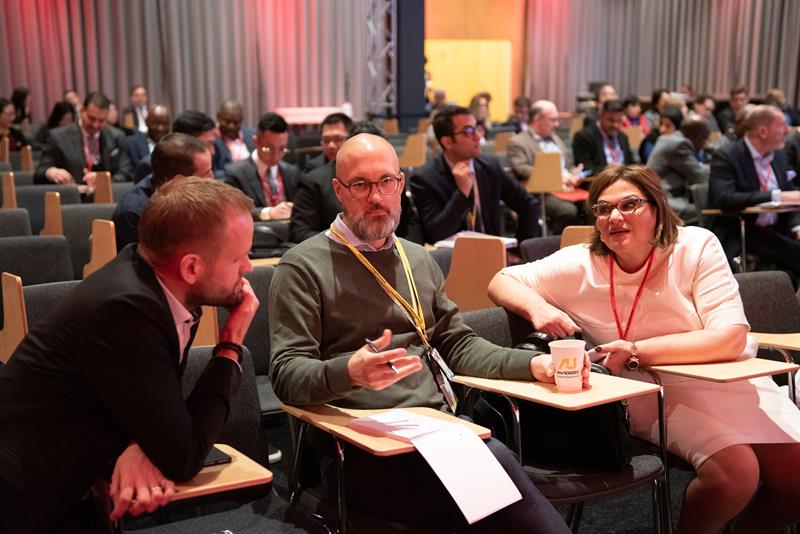
ASA’s Jon Conway took yet another view: he had been impressed by the way handling companies were starting management training schemes, although he admitted that in many respects the sector was old fashioned. How, he asked, do you sell bag loading in 50ºC? It was no wonder that youngsters would change jobs for slightly better remuneration.
“Give candidates a chance to love their job,” declared Mohammed Hanno of ASE. “Make it attractive: their passion and love are vital.” Talk moved on to airport congestion and forecasted growth, and how to tackle this. The panel agreed that most airports were constrained in terms of size and capacity. ASA and ACI are working together on this subject and trying to find an answer to the swelling numbers of air travellers. Bruneel agreed on this: airport infrastructure had to be addressed – and soon.
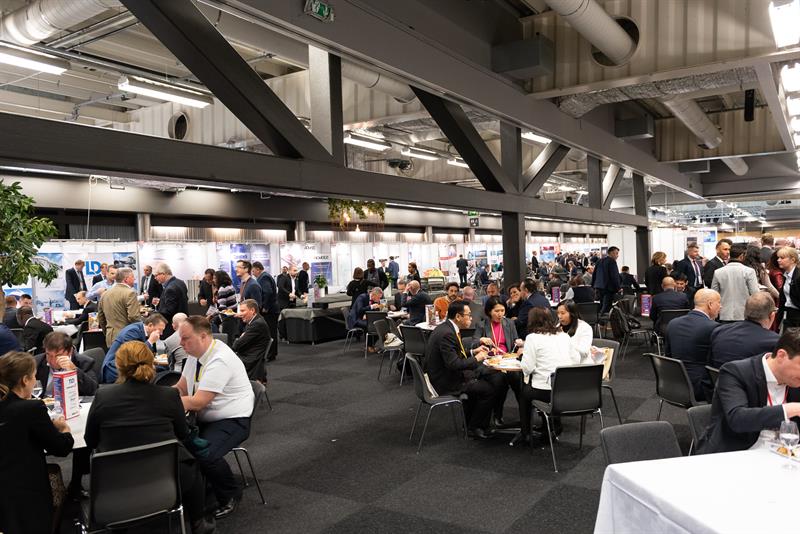
The sector was, in many people’s eyes, an arena devoted to the survival of the fittest. That being so, there seemed to be little incentive for parties to work out common solutions. Could that mindset change? Although panellists like Samir welcomed competition, it was acknowledged that the sector was changing; with the growing interest in AI and autonomous GSE, clearly the future would be different. However, much of this brave new world hinged on investment, something that few handlers, working on tight margins, could reasonably afford. Yes, airport authorities had to take a more enlightened approach, and yes, solutions were out there but as Conway declared, not one size would fit all. Addressing the coming challenge of electric power was just one facet of a far bigger problem.
Contract pricing and negotiation
Contract pricing was also debated. A thorn in the side of the sector, many of the handling community’s problems seemed to stem from this. The fact that procurement was now the intermediary was felt by all to be a mistake: they wanted to talk to the ground ops people, who they felt had a far better grasp of the realities of the day-to-day handling situation. Margit Miller, of Albastar, reckoned that partnership was the key to everything and that this was definitely the way forward. More money, she felt, needed to be put into the system because, quite simply, the LCC contingent had eroded margins to an alarming degree. But – would the passenger pay more for a better service? For Samir, the grouping of handlers and the formation of alliances was one potential future scenario; ultimately, though, everything came down to the need for greater efficiency.
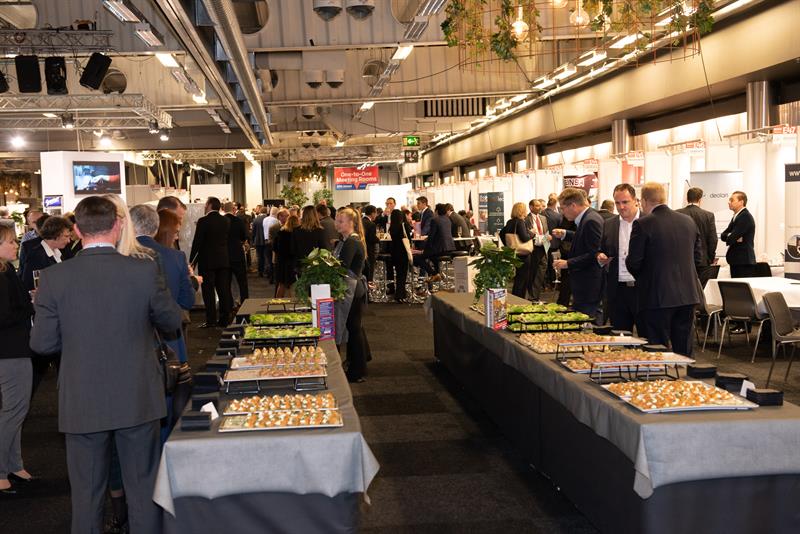
The paper on contract negotiation, delivered by Michael Stephens of Provolution, encouraged audience participation. His aim was one of fostering thought amongst the delegates, thought but without the taint of personal ego or judgement. Citing the failure of KFC when it swapped logistics suppliers (at its peak, failed deliveries to the food outlets was costing it US$2m a day), it was, he averred, easy to get it wrong. He was of the opinion that the success of any contract should not be solely reliant on price – a message to take away, as they say.
The one-man turnaround was the core of Diego Alonso Tabares’s presentation. The Airbus employee is well versed in future scenarios and the Powerpoint showed with clarity a futuristic turn, with automated GSE all controlled by one agent with a tablet. No cones, no unnecessary personnel, no ground damage: the picture painted was perfect. With some extra investment and study, ways around the coupling of the various hoses to the aircraft could be achieved. Pie in the sky? That same week, the Mars explorer landed… He also showed the audience a GSE-free ramp, with baggage belts coming out on to the apron. Futuristic? Not at all – this pop-up ramp delivery system was actually installed at Arlanda, back in 1991.
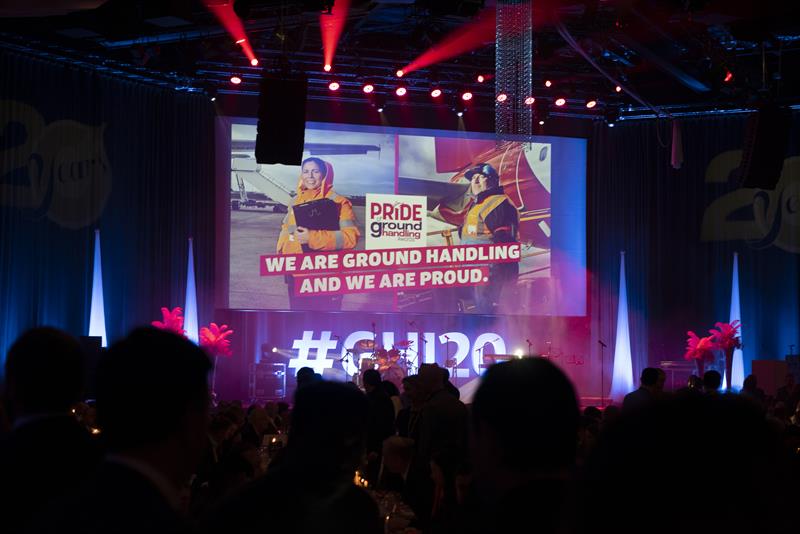
The second day began with a market outlook delivered by Roland Berger’s Didier Brechemier and Gary Ogden of NextGen Business Brokers. Optimistic best summed up their 2019 outlook; this was based on widespread plans to improve operational efficiency and the confidence that new contracts were in the offing. Growth was noted in Asia (27% by all accounts) whilst the biggest challenges were deemed to be those of contract pricing and the shortage of skilled staff. Investment in the sector looked good, with IT, staff training and GSE the top three areas earmarked. An increase in operating costs was on the cards, though – and staff remained the most expensive element. Profit margins doggedly fell within the 5-10% area but there was a feeling that handler/airline partnerships were becoming more of a reality. Attrition was still a problem, though: on average it was put at around 24% but instances of 70% were not unknown.
Ogden mentioned the cost of bringing someone in off the street and putting them through training (US$3,200), a sum that any handling company would want to convert, rather than discard, because of a disgruntled employee. Brechemier noted, though, consolidation and co-operation, and an encouraging level of innovation. A parting question was that of whether IATA could get together with airports to work out a sustainable level of handling operations.
“Keep the trust of your staff and make them feel secure” Amr Samir

Safety at Luton
The Luton Safety Stack might sound like something on final approach – but in fact it is the name of an initiative at the UK airport that has seen stakeholders work together in the wake of IGOM adoption. David Cross, from easyJet, along with the airport’s Liam Bolger, shredded the myths surrounding the complexity of handling; doing away with such challenges as how many cones to put a round a certain carrier’s aircraft, they explained that a uniform, harmonised approach, with all stakeholders communicating with each other, has proved highly beneficial. As Bolger dryly observed, “When you’ve seen one airport, you’ve seen one airport.” The success of the Luton initiative prompted the obvious question: why haven’t other airports followed suit?
From a harmonised operation to an automated one: Thomas Waintraub of CAI ZHI discoursed on robotics on the ramp, which is now on the cards. Facts like everything that has been invented in last 150 years will be reinvented in the next 15 are difficult to assimilate – but that’s the power on computer technology. Self bag drop, biometric boarding, self boarding gates… the list goes on and on. As AI, blockchain and cognitive computing enter the mainstream, the question really is whether there will be room for the handler. Waintraub firmly believes that stakeholders need to invest in this technology: longer term should disclose reduced operating costs and a higher level of passenger satisfaction. He ended with a warning: unless handlers, airports and carriers grasped the nettle, others could well steal a march on them.
The second big debate centred on the PRM. Today, more than at any time in the past, there are more travellers with disabilities flying around the globe. A lively discussion revolved around who should pay and what was being done to rectify the faults within the PRM service provision. Despite the fact that there is documentation to cover this area, problems are still being flagged up and social media has been the tool of choice for those affected. Even the US, which came to terms with this situation in the wake of the Vietnam war, still has a patchy record, according to Mike Garland of American Airlines. It was pointed out by Osman Yilmaz of Celebi that not every low cost carrier is necessarily enamoured by the prospect of carrying PRMs (their carriage can lead to delays unless the operation is slick); and the audience was reminded that the term PRM also covered hidden disabilities. It was felt by the panel that a smarter way of operating (and one that was, perhaps, more uniform in its operation) would assist matters; indeed ASE’s Mohammed Hanno believed that even when a PRM failed to notify the correct authority before travelling, nevertheless the airport should have a fall-back plan. Ultimately, all the stakeholders needed to get together on this topic.
“When you’ve seen one airport, you’ve seen one airport” Liam Bolger

The younger generation
Millennials were mentioned earlier on: Desiree Perez, of the Aviation Leadership Academy, threw out the attributes that were their lot. Less job loyalty, a work/leisure balance in favour of the latter, a different outlook on life… Although the label was much in use, she admitted that they were no worse or no better than their forebears, or those who followed. Her explanation was succeeded by a panel which featured a number of this generation, and who were able to focus the audience on this particular subject. After all, by 2025 75% of the workforce and customer base would wear this tag.
The last day’s papers included financial and contract subjects. Margin squeezes were addressed by Amr Samir, who revealed to delegates how costs might be saved; whilst for Vienna airport’s Wolfgang Fasching, playing games was the order of the day, as he showed how strategic game play could help in contract negotiation. Up for grabs was a discount ticket for the 2019 GHI Conference but human nature being what it is, neither of the two delegates on the stage won the prize because they both opted for the same thought pattern.
Back to company philosophy: Nick Yeadon from Air Dispatch was at pains to explain to the audience that Just Culture was more than just safety on the ramp. In his company, this philosophy is applied throughout, with everyone buying into the idea. A failure prompted this rethink – and he hasn’t looked back since. Koen Slembrouck, from Norwegian Air, then took the stage to argue that the low cost carrier model was not only sustainable but that its ground handling arm was equally so. Flexibility was the key to its growing network, along with the realisation that not everything worked at every station in the same way. To his mind, safety sat at the top of the triangle whilst its corners were made up of performance and price. He did, however, emphasise that a relationship, not a price, was the key to success with a third party handler. The day ended with an interesting paper from lawyer Maris-Jose Viegas on the very real problems of drug and alcohol abuse on the ramp which was followed by the final debate, this one looking at the reality (and incentives) involved in GSE pooling. A growing interest in this area has been noted cross the globe – but was it the solution for all? Luton airport’s Liam Bolger was aided in the debate by David Read of TelTech Projects.
A non-IATA SGHA?
Brechemier took up the thread of the non-IATA SGHA on the second day. Advocating customisation and better use of the SGHA, he highlighted that most agreements follow a generic format with added services, but tailoring contracts could help pave the way for new ground handling business models. He identified the potential benefits: “More customisation could allow for deeper co-operation and induce more transparency by reducing information asymmetries, thus lowering transaction costs,” he declared. He added that more control over KPIs would also result.
However, reluctance to customise SLAs stems from complexity and trust issues. “Data collection and sharing is key between stakeholders but still limited. Technology is not the issue – it’s trust,” Brechemier explained, asserting that more data sharing will fuel innovation. “I think we’ll have some strong changes started by the bigger airports,” he predicted, anticipating new collaborations between airlines and ground handlers.
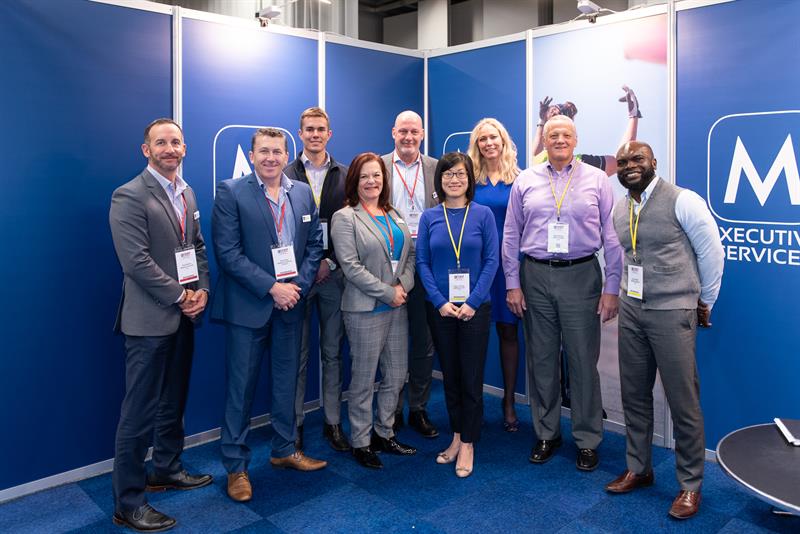
Millennial panel debate
A panel of under 30s discussed the industry from the vantage point of the millennial employee, from the business’ lack of exposure as a career option to the workplace culture fostered by the Baby Boomers before them.
Having worked at three different companies in five years, Andrea Bombelli, International Sales & Marketing at Bombelli, spoke from experience when he stressed the Millennial worker’s need to see a future and a clear path of progression to stay engaged with a job. Shaza Alashi, Marketing Representative at SGS, concurred. “We like to know where we are going to end up,” she said, adding that Millennials prefer to be led rather than “managed” in the traditional sense. As for the question of why millennials are in a “rush” to progress, Alashi had the answer: “We grew up believing we could change the world. That’s why we want to progress to leadership – not because we’re in a rush to get to the end but because we believe we can do better.”
Dennis Kionga, Business Development, Global Load Control, remarked on a preference for flexibility in the working day, as opposed to the conventional, prescriptive daily routine – but how do we accommodate this in aviation, in a world of rules and procedures, asked a delegate? “If people believe in something, they follow rules willingly,” pointed out Bombelli. Bolstering this view, Alashi suggested that the key motivation for a Millennial employee is feeling connected to the purpose of the company – and believing that their employer is willing to listen to them.
Kionga criticised the proliferation of the negative stereotypes that plague the Millennial generation, such as their need for immediate gratification, while Bombelli highlighted that some stereotypes, such as affinity with new technology, are beneficial. As the first “digital natives”, in Alashi’s words, Bombelli, suggested encouraging the use of new communication channels, like Whatsapp.
On the matter of the environment created by the predating Baby Boomers, Corporate Culture Coach Perez blacklisted a phrase heard all too often in the office: “But we’ve always done it this way.” This, she asserted, stifles creativity and is not conducive to the evolution of the business. “Millennials do their best when they can see they’re making an impact,” was her lasting advice.
“It’s not a question of thinking outside the box, but thinking without the box” Mike Garland
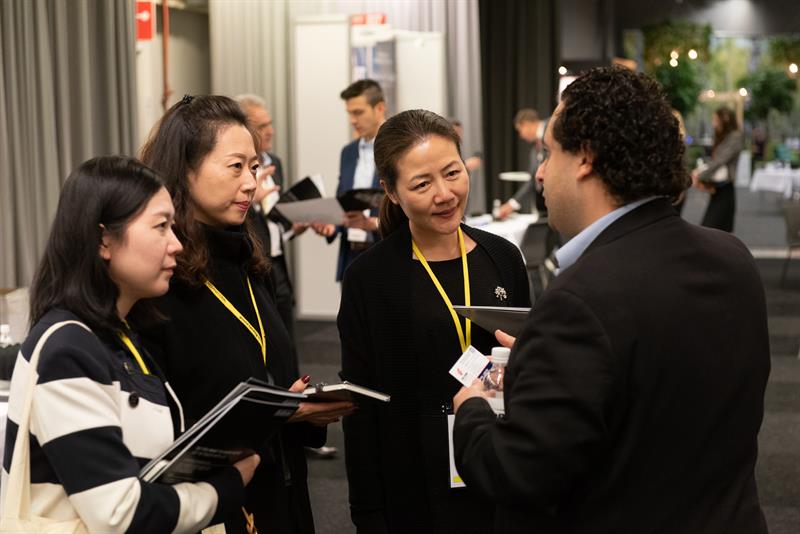
That was the year…
Finally, at the conference, the Editor caught up with Platinum Sponsor Swissport’s Nils Knudsen.
“For Swissport, 2018 has been a good year,” he relates. “The first half profits were up on those of 2017 and the driving force has been cargo, even though our handling split is 80% passengers, 20% freight. So cargo has been good but the pax side has also done well, even if there was less growth.
“The acquisition of Aerocare in Australia was a big achievement for us: south-east Asia has been focus for the company and now we have a great platform. The company was well structured so integration was straightforward. Rebranding occurred in the summer; we have a need to be truly global and this was a perfect fit. There’s some competition but that’s a good thing. The next step is to see how we can expand the business there - and it’s no secret that we are always looking out for interesting propositions.
“The other region of interest is the Middle East. The market there is more liberalised now although handling and airport monopolies still exist. It’s a challenge, so it will be important not to rush things.
“One of the biggest problems we share with other handlers is cost structure: labour is a big percentage and costs have gone up in the mature markets like the US and Asia. We now have around 70,000 staff worldwide and labour costs, as well as those of training, is something we are constantly looking at. Innovation is required to solve this, and it’s something our specialists are studying now; things like transport sharing can help, for example. We’ve picked a few stations this year to try out some ideas and more are scheduled for 2019. Autonomous transport is another interesting area and we are actively pursuing telematics as a useful solution. Helpfully, some of our airline customers are very much behind us in these projects.
“The other big innovation has been the Swissport Formula, where we look to standardise processes and procedures as much as possible. In this context, we have taken on board airline practices too, which has helped reduce the number of audits required.”
Thanks are due to all of our sponsors for helping to make the 2018 event truly memorable. For 2019, the GHI annual conference will be held in Amsterdam, over November 4-7.





